Affiliate links on Android Authority may earn us a commission. Learn more.
How to check the battery health on a MacBook
A device is only as good as the power that supplies it. So when you buy a shiny expensive new electrical toy for yourself, it’s in your best interests to ensure that the power supply works as advertised. Otherwise, that nice shiny object is no better than a drink coaster. Here’s how to check the battery health on a MacBook.
QUICK ANSWER
To check the battery health on a MacBook, click the battery icon at the top-right of your screen. A small menu will now appear. Click Battery Settings to be taken to the Battery section in the MacBook settings. Click the small icon next to Battery Health to see the battery's current maximum capacity.
JUMP TO KEY SECTIONS
MacBook charge cycles and battery health explained
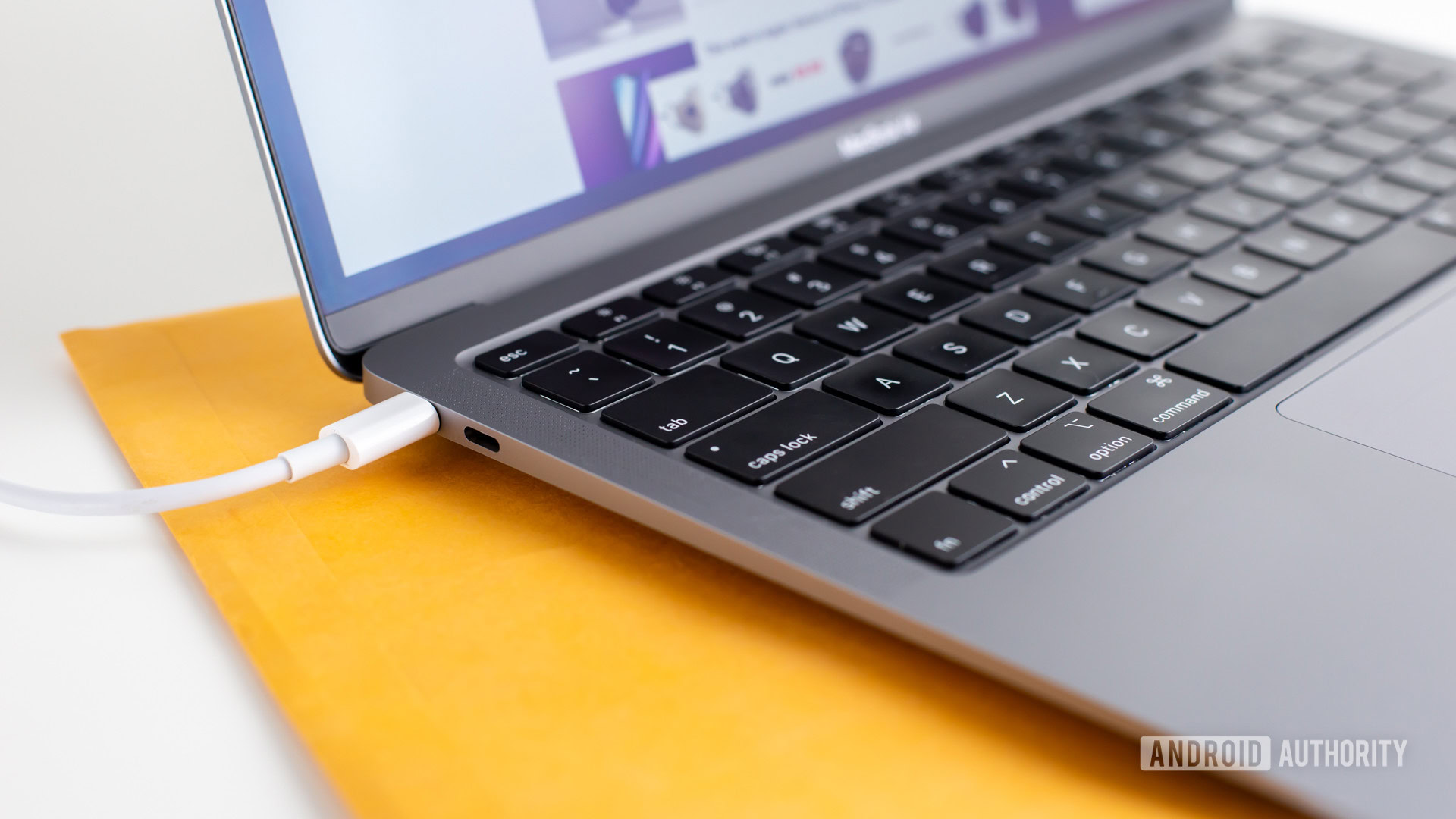
Very simply put, a healthy battery on a MacBook is anything that is 80% or over. When we say 80%, we mean the battery’s ability to hold that amount of charge at one time. This is called the Maximum Capacity, and we’ll look in the next section at how to find that on your machine.
As long as you have 80% or above, Apple considers the battery to be “optimal” and won’t replace it. As soon as the battery dips to 79% and below, then that’s when the battery starts to head into sub-optimal territory, requiring possible replacement.
Charging cycles?
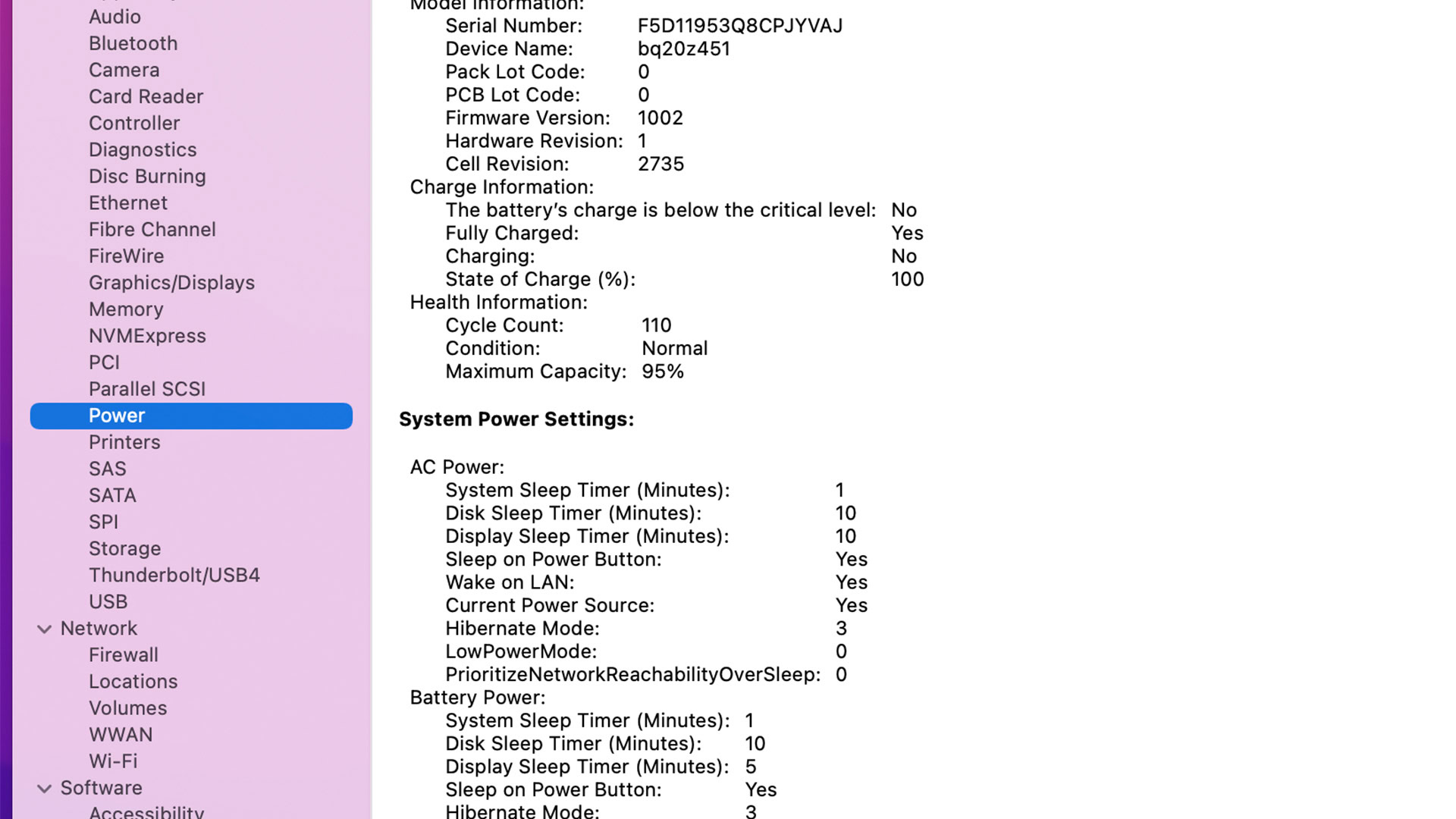
A charging cycle is the process of completely depleting and then completely charging a battery. The average MacBook battery lasts for an average of five years, or 1,000 charging cycles, although it will vary depending on your device usage. Apple displays these charging cycles alongside the “Cycle Count” readout, as demonstrated in the image above.
How to check your MacBook’s battery health
Checking your MacBook battery health is a very simple process. First, click on the battery icon at the top-right of the screen. A small menu will appear.
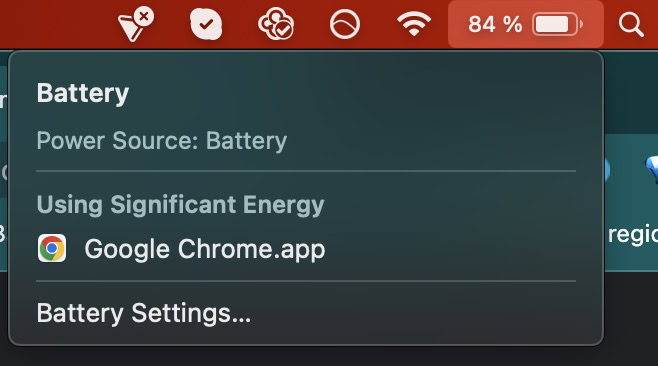
As well as specifying whether or not the machine is working from the battery or the charging cable, it also tells you if any running programs are using a significant amount of energy. As usual, Google Chrome tops the biggest offenders list. You can reduce this from happening by closing unneeded browser tabs (especially Gmail.) Or use a browser extension called OneTab as I do.
This menu will also tell you if it’s time to change the battery. If you see one of the following messages in this menu, then get the MacBook to an Apple technician right away.
- Replace Soon
- Replace Now
- Service Battery
Battery settings
Now, click Battery Settings. The first thing to note here is that Battery Level at the top is not your battery’s maximum capacity. It’s simply the amount of battery you currently have left before needing to charge it again. To see your Battery Health, click Battery Health, specifically the small ‘i’ icon next to Normal.
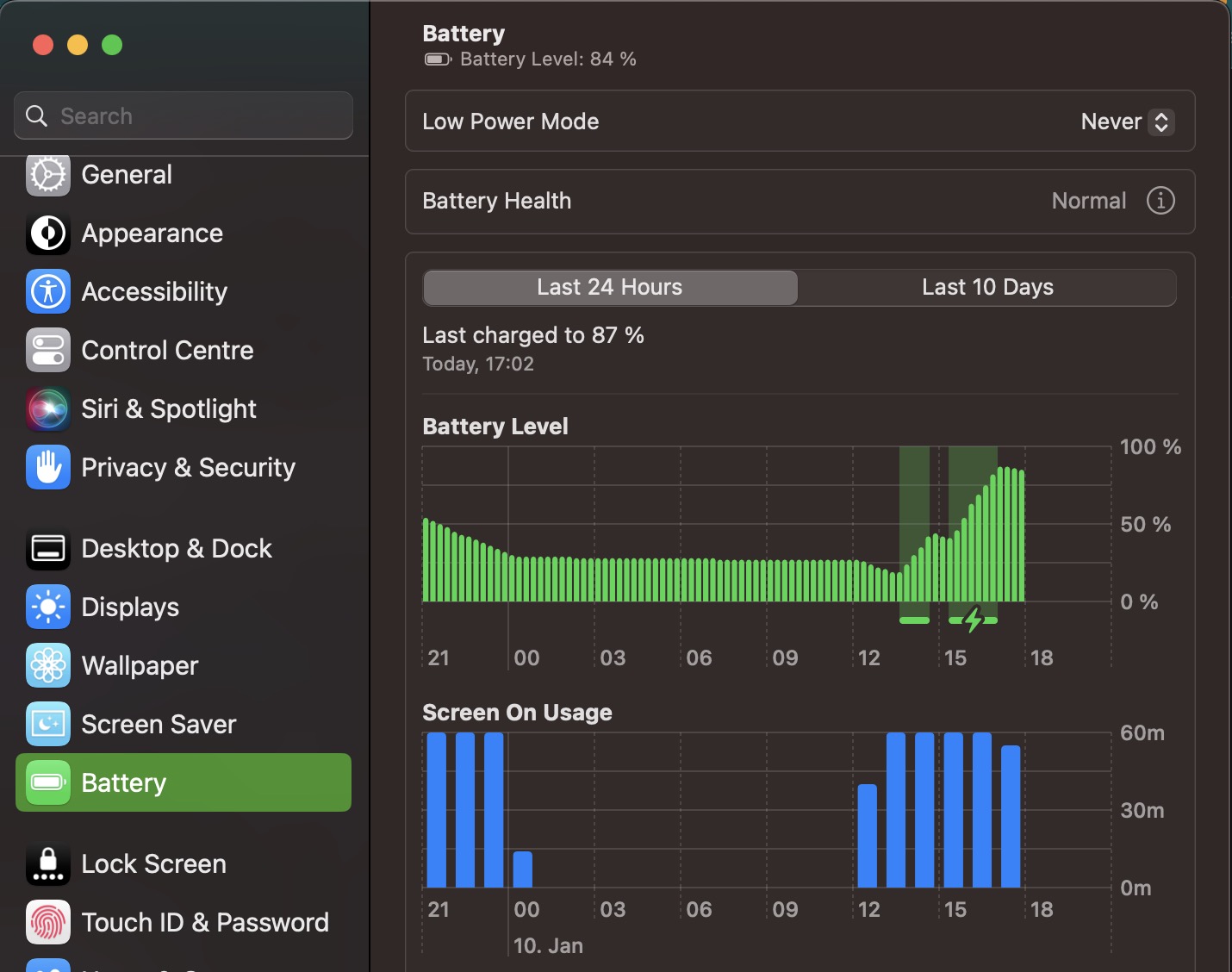
This is where you will get a fuller picture of your battery’s health. The Maximum Capacity here is 89%, which means the battery can’t hold any more than that (my device is almost two years old.) As long as it stays at 80% or above, everything will be fine. Once it dips to 79% or lower, that’s when the battery will start to really deteriorate, requiring emergency surgery by an Apple surgeon.
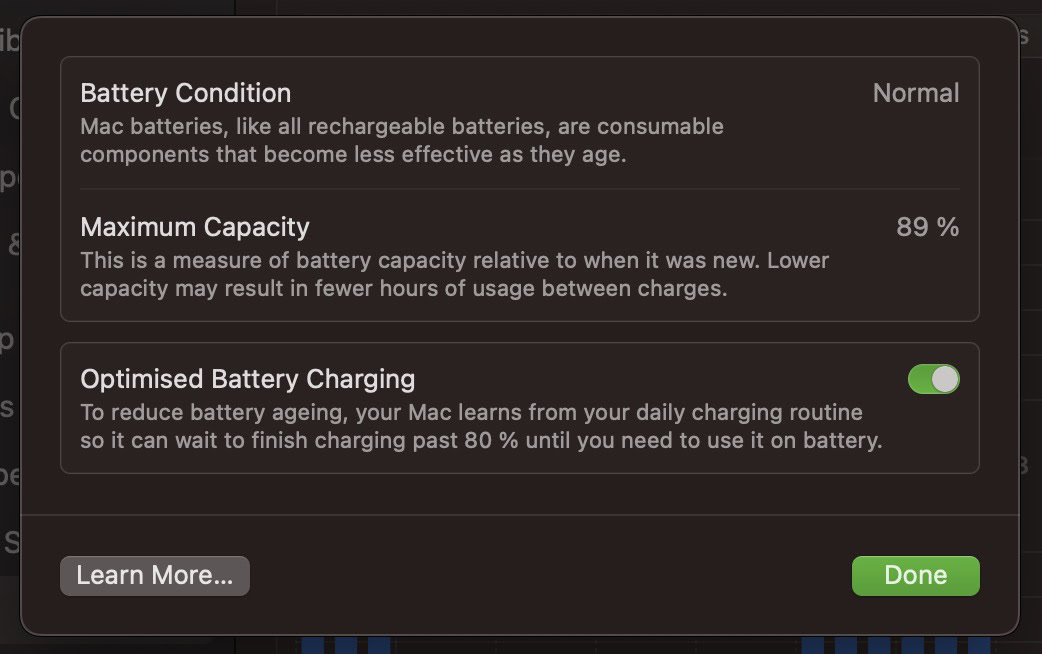
You should also enable Optimized Battery Charging and keep it on at all times. As it says, it helps to reduce battery aging. So there’s no good reason to keep it disabled. Every little bit helps, right?
How to preserve battery health on a MacBook
Once a battery starts to physically deteriorate, there’s nothing you can do to stop its decline. Aging is irreversible, whether it’s a human or a laptop battery. So keeping the battery capacity permanently at 100% is just plain impossible. So you need to focus on how to keep the battery capacity at 80% or higher for as long as possible.
Here are 6 tips to keep your MacBook battery health optimized for as long as possible.
Don’t charge the MacBook to 100%
It may make you feel better to have a full charge, but over the long term, a 100% charge is only going to degrade the battery faster. Try to keep to no more than 60%-70% at one time.
Don’t let the MacBook charge drop to single digits
While a full charge is not a good idea for long battery life, neither is a low charge. If you allow your MacBook to constantly drop into the single digits, then you’re going to have issues later.
If the battery is fully discharged, and then you don’t use the machine for a while, it could go into what is called a “deep discharge” state. This means it won’t switch on again because it won’t be able to hold a charge anymore.
Don’t leave the MacBook unused for long periods
Even if you stop using your MacBook for a long period, with a big charge, that charge will gradually start to go down. Once the battery is fully drained and you eventually try to switch it back on again, you’ll have the “deep discharge” problem that was just mentioned.
Apple recommends that you recharge the MacBook every six months to stop this from happening.
Don’t leave the MacBook plugged in for very long periods
I made this blunder with my first MacBook way back in 2012. I was so used to desktop computers — and the fact they were plugged in 24/7 — that I subconsciously did the same with my first laptop. Needless to say, this didn’t do any long-term favors to the battery.
Laptops are not meant to be plugged into a charging cable for long uninterrupted periods. The extra heat from the charging cable will make the battery even hotter. That said, newer-model MacBooks do have the ability to manage charging and they can even halt charging if the laptop is left plugged in for an extended period of time. The battery management software that Apple employs on the M1 and M2 models can go a long way, and while leaving your laptop plugged in constantly still isn’t great, it’s not as bad as it used to be.
Watch the surrounding temperatures
Try not to use your MacBook in extreme temperatures, whether that’s too hot or too cold. If you do, then the battery is going to suffer. If you live in an area with extreme temperatures, do your best to protect the laptop. If it’s too hot, try to keep the room as cool as possible. If it’s too cold, gently warm the room up a bit.
This also goes for moisture levels, so don’t take your laptop into the bathroom with you when having a nice hot steamy bath.
Update the MacBook’s operating system software
Finally, the old standby to every problem — keep the MacBook’s operating system updated as new patches come out.
FAQs
No. You can’t reverse battery degradation. You can only replace the battery.
When the battery goes below 80% capacity, you will receive a warning telling you that the battery is severely degraded, and Apple will replace it for you.
On average, five years, which is 1,000 charging cycles.
Not unless you have AppleCare+ and the battery is below 80%. Otherwise, they will charge a service fee.
A MacBook has a Lithium-ion battery. These batteries are typically not negatively affected by leaving the device plugged into a charging cable for short infrequent periods. Moreover, while this has been more true in the past, Apple’s battery management software protects your M1 or M2 MacBook’s battery, even when it’s left plugged in all the time. That said, it’s still better to unplug it.
No, it takes longer than that to complete the task. Your device will have to be sent off to be repaired.
